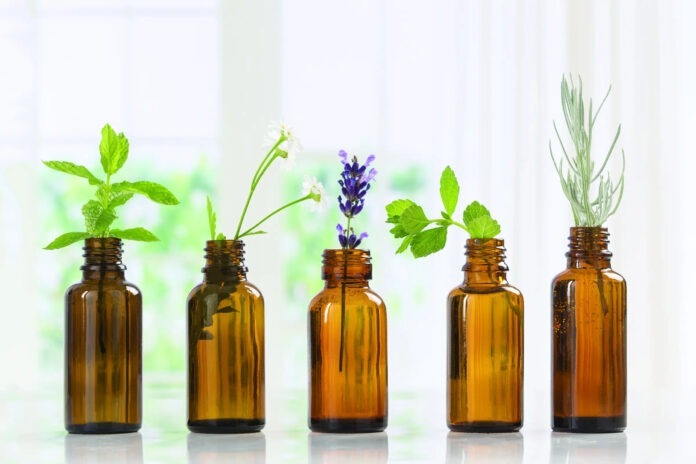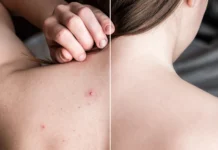Table of Contents
In today’s fast-paced world, where stress and anxiety seem to lurk around every corner, discovering natural pathways to relaxation and wellness has never been more crucial. Enter the ancient practice of aromatherapy—a holistic healing treatment that uses natural plant extracts to promote health and well-being. This guide is designed to introduce wellness enthusiasts, aromatherapy beginners, and health-conscious individuals to the transformative powers of aromatherapy.
Understanding Aromatherapy
Aromatherapy involves inhalation and topical application of essential oils—highly concentrated extracts derived from plants’ leaves, flowers, stems, and roots. The plant’s essence can profoundly affect the mind, body, and spirit. The practice dates back thousands of years, with civilizations such as the Egyptians, Chinese, and Greeks utilizing essential oils for therapeutic, spiritual, and cosmetic purposes.
The beauty of aromatherapy lies in its versatility and accessibility. With a wide range of essential oils available, each boasting unique benefits, you can tailor your aromatherapy experience to your specific wellness goals.
The Science Behind Aromatherapy
The effectiveness of aromatherapy is rooted in the complex relationship between the sense of smell and the brain. When you inhale essential oil molecules, they interact with the olfactory organs and, almost instantaneously, the brain. This interaction stimulates the limbic system, associated with emotions, memory, learning, appetite, and sexual arousal.
Beyond emotional and psychological impacts, essential oils can have physical effects when absorbed through the skin. They travel through the bloodstream, influencing systems throughout the body. It’s important to note that while aromatherapy can support wellness, it should not replace medical treatment but rather complement it.
Essential Oils and Their Benefits
The heart of aromatherapy is, without a doubt, the essential oils themselves. Here are a few popular ones, each with its unique healing properties:
- Lavender: Celebrated for its soothing properties, lavender oil is a go-to for stress relief, relaxation, and sleep.
- Peppermint: Known for its invigorating and refreshing effects, peppermint oil can enhance focus, alleviate headaches, and soothe digestive issues.
- Tea Tree: With powerful antiseptic properties, tea tree oil is excellent for skin health, particularly in treating acne, dandruff, and fungal infections.
- Eucalyptus: Recognized for its respiratory benefits, eucalyptus oil can help relieve cold symptoms, coughs, and sinus congestion.
- Lemon: This citrus-scented oil can uplift moods, improve concentration, and has antibacterial and antifungal properties.
How to Use Essential Oils
Aromatherapy can be practiced in several ways, from simple to elaborate methods, depending on your preferences and needs:
- Inhalation: This is the most common method of using essential oils. It can be as simple as sniffing the oil directly from the bottle or using a diffuser to disperse the aroma into the air.
- Topical Application: Essential oils can be applied to the skin, either directly (for those deemed safe for direct skin contact) or diluted in a carrier oil like coconut or jojoba oil. Common application sites include the wrists, temples, chest, and the soles of the feet.
- Bath: Adding a few drops of essential oil to a warm bath can create a relaxing and therapeutic experience, combining the benefits of inhalation and topical absorption.
- Massage: Incorporating essential oils into a massage oil not only enhances the relaxing effects of the massage but also provides the therapeutic benefits of the oils through skin absorption.
Safety and Precautions
While aromatherapy is generally safe, essential oils are potent substances that should be used carefully. Here are some safety tips to keep in mind:
- Dilution: Most essential oils should be diluted in a carrier oil before topical application to prevent skin irritation or sensitization.
- Patch Test: Before using oil topically, especially for the first time, conduct a patch test on a small skin area to ensure you don’t have an adverse reaction.
- Pregnancy and Children: Certain essential oils should be avoided during pregnancy and in young children. Consult with a healthcare provider before starting aromatherapy under these conditions.
- Quality: Always use high-quality, pure essential oils from reputable sources. Synthetics and adulterated oils may not offer the same benefits or be harmful.
Getting Started with Aromatherapy
Beginning your aromatherapy journey is as simple as choosing a few essential oils to start experimenting with. Consider beginning with lavender, peppermint, and lemon—three versatile oils that address a broad range of wellness goals.
Invest in a quality diffuser for inhalation and a selection of carrier oils if you plan to explore topical application. Remember, discovering what works best for you and your unique needs is the key to a successful aromatherapy practice.
Conclusion
Aromatherapy offers a natural, accessible way to enhance physical, emotional, and spiritual well-being. Incorporating essential oils into your daily routine can unlock the potential to transform your life in profound ways. Whether you’re seeking to reduce stress, improve sleep, boost your mood, or support physical health, aromatherapy can be a valuable and enjoyable component of a holistic approach to wellness.
Step into the world of aromatherapy with mindfulness and curiosity, and allow the ancient wisdom of essential oils to guide you toward a more balanced and harmonious state of being.





